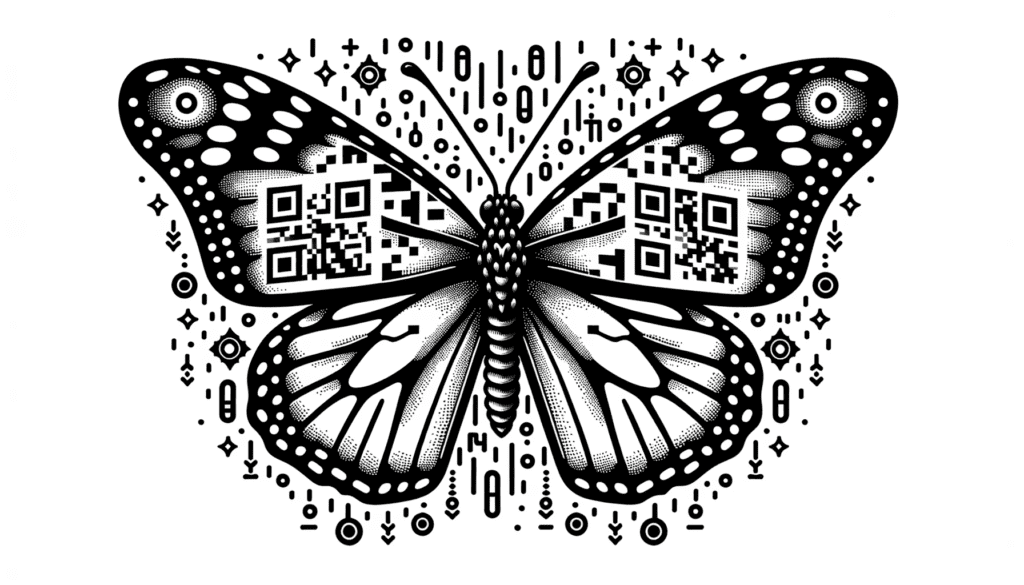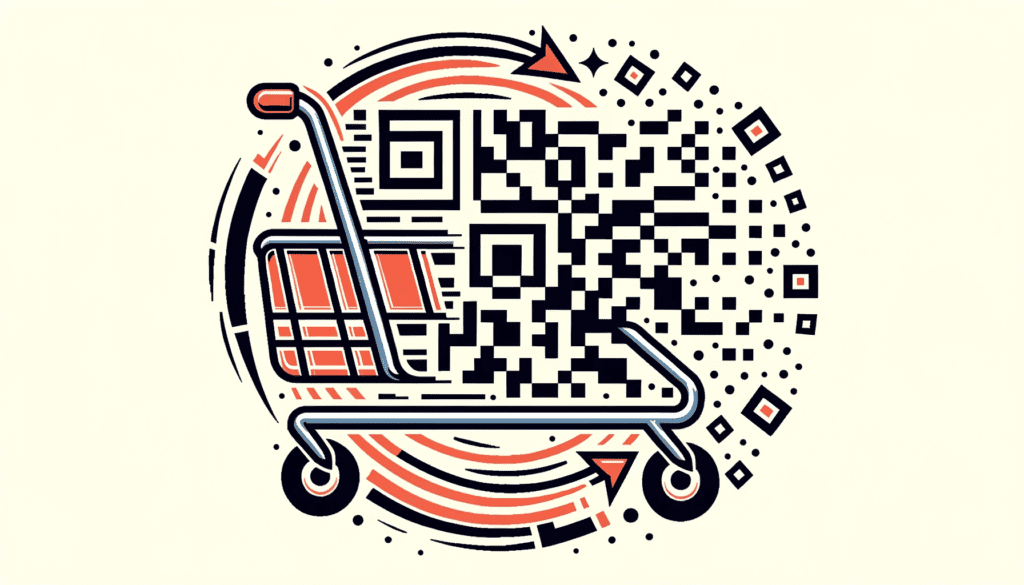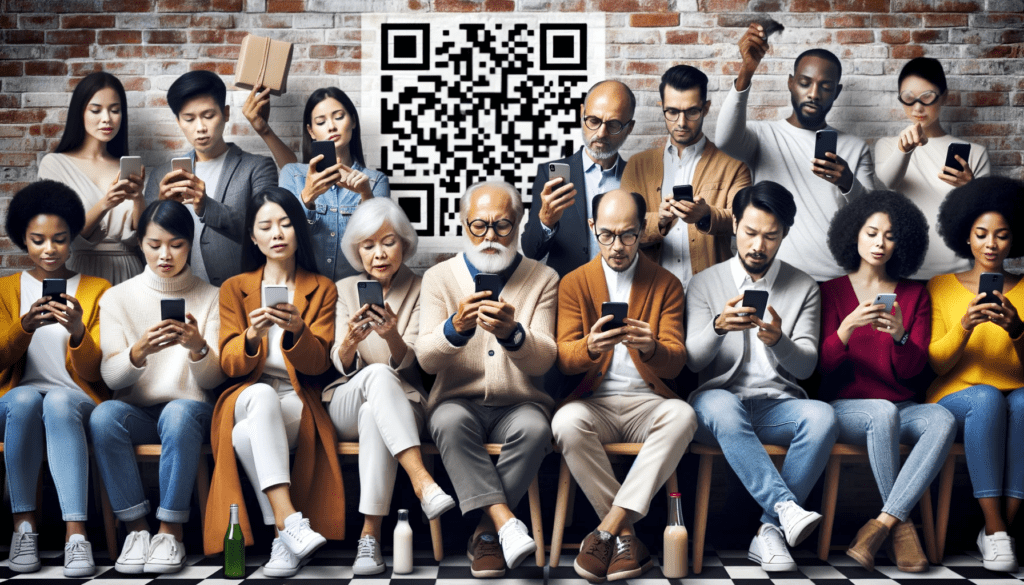Introduction: The Impact of QR Codes on Consumer Behavior
QR codes have become a ubiquitous part of our daily lives, revolutionizing the way businesses engage with consumers.These two-dimensional barcodes can be easily read by smartphones, allowing users to access digital content or information with a simple scan. In recent years, QR codes have gained significant popularity in marketing due to their ability to store more information compared to conventional barcodes. This article explores the rise of QR codes in marketing, their influence on consumer behavior, the benefits of using QR codes in marketing campaigns, successful QR code campaigns, tips for effective QR code usage, future trends in QR code technology, the impact of QR codes on the omnichannel customer experience, differences between static and dynamic QR codes, and how businesses can analyze consumer behavior using QR codes.
QR codes have transformed the way businesses interact with consumers, providing a seamless bridge between the physical and digital worlds. By scanning a QR code, consumers can easily access information, exclusive offers, or interactive experiences. This ease of access has had a profound impact on consumer behavior, shaping their purchasing decisions and overall brand perception.

The Rise of QR Codes in Marketing
The usage of QR codes in marketing can be traced back to the automotive industry in the 1990s. However, it was only in the 2000s that QR codes gained traction in consumer advertising and marketing strategies. The resurgence of QR codes can be attributed to the shift in consumer behavior and the increasing reliance on smartphones as a primary means of accessing digital content. As smartphones became more prevalent and internet connectivity improved, QR codes became a valuable tool for marketers to bridge the gap between the physical and digital world.
For example, in the early 2000s, a prominent fast-food chain in Japan implemented QR codes on their packaging. Customers could scan the QR code to access nutritional information, coupons, and even play interactive games. This innovative approach not only engaged customers but also provided valuable data on customer preferences and behavior.
Despite facing usability issues initially, QR codes have experienced a recent surge in popularity due to their touch-free capabilities, which became especially relevant during the COVID-19 pandemic. Various industries, including restaurants, bars, airports, and retail stores, have embraced QR codes to provide touchless experiences and streamline processes. For instance, many restaurants now incorporate QR codes into their menus, allowing customers to view the menu on their smartphones instead of handling physical menus. This not only reduces the risk of spreading germs but also provides an interactive experience by including images, descriptions, and even customer reviews.
Influence of QR Codes on Consumer Behavior
QR codes have a positive influence on consumer behavior by enhancing perceived flow, which refers to the ease and enjoyment experienced by individuals when interacting with technology. Perceived flow positively influences customer satisfaction and purchase intention. When consumers are able to seamlessly scan a QR code and access relevant information or offers, it creates a sense of flow, making the overall experience more enjoyable. This positive experience then translates into increased customer satisfaction and a higher likelihood of making a purchase.
Numerous studies have examined user attitudes, intentions, and behaviors regarding QR code usage, highlighting the impact of QR codes as embedded advertising tools in online shopping, leading to increased profitability and customer satisfaction. For example, a study conducted on the usage of QR codes in the fashion industry found that QR codes significantly influenced consumers' purchase intentions and willingness to recommend the brand to others. By seamlessly integrating QR codes into the customer journey, businesses can effectively influence consumer behavior and drive purchase intent.
An example of this can be seen in the retail industry. Many retailers have started using QR codes as part of their in-store displays. When customers scan the QR code, they are directed to a landing page that provides additional product information, customer reviews, and even personalized recommendations based on their browsing history. This not only enhances the customer's shopping experience but also increases the likelihood of making a purchase.
Additionally, QR codes have been found to positively impact the omnichannel customer experience.A study examining the impact of QR codes on the omnichannel customer experience and purchase intention found that QR codes play a significant role in creating experiential value and triggering purchase intention. By striking a balance between digitalized and personalized QR code information, businesses can create a positive and seamless omnichannel customer experience.
For instance, a cosmetics brand incorporated QR codes into their in-store displays. Customers could scan the QR code to access personalized skincare recommendations based on their skin type and concerns. This not only provided a personalized and interactive experience for customers but also increased their likelihood of making a purchase.

Benefits of Using QR Codes in Marketing Campaigns
Compared to conventional barcodes, QR codes offer several benefits in marketing campaigns. One significant advantage is their capacity to store more information, allowing marketers to convey detailed messages or provide access to interactive content. Marketers can embed QR codes into promotional materials to attract consumer attention and track customer behavior. QR codes also facilitate the evaluation of marketing campaigns and the collection of customer reviews, providing valuable insights for businesses. Furthermore, sharing QR codes on social media platforms can influence purchase intention, leveraging the power of social proof and recommendations.
For example, a company running a promotional campaign can include a QR code on its print advertisements. When scanned, the QR code can direct users to a landing page with more information about the product or service being advertised. This allows marketers to convey detailed messages or provide access to interactive content such as videos or quizzes, enhancing the overall engagement and impact of the campaign.
Additionally, QR codes can be used to track customer behavior and evaluate the effectiveness of marketing campaigns. By embedding unique QR codes in different marketing materials or channels, businesses can track which QR codes are scanned the most and analyze the customer journey from scan to conversion. This data can then be used to optimize future marketing efforts and improve the overall effectiveness of QR code usage.
Furthermore, QR codes can be shared on social media platforms, influencing purchase intention. When customers come across a QR code shared on a social media post, they can scan it to access exclusive offers or discounts. This creates a sense of urgency and social proof, increasing the likelihood of making a purchase.
Successful QR Code Campaigns
Real-world examples demonstrate the effectiveness of QR codes in marketing campaigns. Various industries, including retail, hospitality, and tourism, have implemented QR codes to create interactive experiences, enable contactless shopping, and facilitate seamless payments. These QR code campaigns have achieved success metrics such as increased customer engagement, improved customer satisfaction, and enhanced brand loyalty.
One notable example of a successful QR code campaign is the use of QR codes in museums and art galleries. Instead of providing traditional audio guides, many museums now offer QR codes that visitors can scan to access additional information about exhibits, interactive games, or even virtual reality experiences. This not only enhances the visitor's experience by providing a deeper understanding of the artwork but also allows the museum to collect valuable data on visitor preferences and engagement.
Another successful QR code campaign can be seen in the hospitality industry. Many hotels now provide QR codes in guest rooms that allow guests to access hotel services, such as room service, spa bookings, or concierge assistance, directly from their smartphones. This not only improves the overall guest experience by providing a convenient and contactless way to access hotel services but also allows the hotel to gather valuable data on guest preferences and behavior.
Furthermore, QR codes have been successfully used in retail stores to enhance the shopping experience. For example, clothing retailers have incorporated QR codes into their apparel tags. When customers scan the QR code, they can access additional product information, such as sizing options, fabric details, and styling suggestions. This not only provides a more immersive and informative shopping experience but also increases customer engagement and the likelihood of making a purchase.

Tips for Effective QR Code Usage
To ensure the effectiveness of QR codes in marketing campaigns, proper placement, design, and call-to-action are crucial. QR codes should be strategically positioned where they are easily visible and accessible to the target audience. Additionally, optimizing the landing pages or content linked to QR codes is essential to provide a seamless user experience. It is important to ensure that QR codes are scannable on different devices and in various environments to maximize their utility.
For example, when placing QR codes on physical marketing materials such as posters or flyers, it is important to consider the location and visibility of the QR code. Placing the QR code at eye level and ensuring that it stands out from the surrounding content can increase the likelihood of users scanning it. Additionally, when designing the landing page or content linked to the QR code, it is important to optimize it for mobile devices and ensure that it provides a seamless user experience. This includes making sure that the content is easy to read, the page loads quickly, and any forms or actions required are user-friendly.
Moreover, businesses should consider the specific needs and preferences of their target audience when using QR codes. For instance, if the target audience consists of older adults who may not be as familiar with QR code scanning, providing clear instructions and guidance can help improve their scanning experience and encourage engagement.
Future Trends and Advancements in QR Code Technology
The future of QR codes holds exciting possibilities, including dynamic QR codes, enhanced interactivity, and integration with augmented reality. Dynamic QR codes can be changed and updated, allowing for real-time tracking and data collection. As technology continues to advance, QR codes are expected to play a more significant role in consumer behavior and marketing strategies.
One future trend in QR code technology is the integration of augmented reality (AR). By combining QR codes with AR technology, businesses can provide users with immersive and interactive experiences. For example, a QR code could trigger a virtual try-on experience for a fashion brand, allowing users to see how a particular item of clothing would look on them in real-time. This not only enhances the user experience but also provides valuable data on user preferences and engagement.
Furthermore, advancements in QR code technology are leading to enhanced interactivity. QR codes can now be designed to trigger actions such as playing videos, opening social media profiles, or initiating a call. This added interactivity allows businesses to create more engaging and personalized experiences for their customers.
Another future trend is the use of dynamic QR codes. Unlike static QR codes that contain fixed information, dynamic QR codes can be changed and updated as needed. This allows businesses to track real-time data on user interactions, such as the number of scans, time of scans, and location of scans. This data can then be used to personalize marketing messages, track the effectiveness of campaigns, and make data-driven decisions.
QR Codes and the Omnichannel Customer Experience
QR codes have a significant impact on the omnichannel customer experience and purchase intention. By leveraging QR codes, businesses can create experiential value and trigger purchase intention in a seamless and personalized manner. However, it is crucial to strike a balance between digitalized and personalized QR code information to ensure a positive experience for customers.
An example of QR codes enhancing the omnichannel customer experience can be seen in the retail industry. Many retailers now provide QR codes in their physical stores that customers can scan to access exclusive offers, personalized recommendations, or additional product information. By seamlessly integrating the online and offline shopping experience, retailers can create a cohesive and personalized customer journey.
To strike a balance between digitalized and personalized QR code information, businesses should consider the preferences and needs of their target audience. Some customers may prefer a more personalized experience, while others may prioritize speed and convenience. By understanding their customers' preferences, businesses can tailor their QR code marketing strategies to provide a positive and engaging experience.
Limitations and Considerations in QR Code Usage
Despite their advantages, QR codes also have limitations that businesses must consider. These limitations include limited interaction and accessibility, which may impact user experience. To overcome these challenges, it is important to understand user behaviors and preferences when implementing QR code marketing strategies.
One limitation of QR codes is the limited interaction they provide. While they can provide access to information or interactive experiences, the level of interaction is often limited compared to other digital marketing channels. For example, a QR code can direct users to a landing page with product information, but it may not offer the same level of interactivity as a dedicated mobile app.
Accessibility is another consideration when using QR codes. While smartphones have become ubiquitous, not all consumers may have access to a smartphone or may not be familiar with how to scan QR codes. It is important to consider alternative options for those who may not be able to scan QR codes, such as providing a phone number or URL for those who prefer a more traditional approach.
To overcome these limitations, businesses should conduct user research and testing to understand how their target audience interacts with QR codes. This can help identify potential barriers or challenges and inform the design and implementation of QR code marketing strategies. Additionally, providing clear instructions on how to scan QR codes and offering alternative options for those who may not be able to scan them can help ensure a positive user experience for all customers.
Analyzing Consumer Behavior with QR Code Analytics
QR codes provide businesses with the opportunity to analyze consumer behavior and preferences through QR code analytics. By leveraging QR code analytics, businesses can gain insights into customer interactions, preferences, and demographics. Integration with heat mapping tools further enhances the analysis of user interactions on websites, allowing for a deeper understanding of consumer behavior. This information can be used to plan targeted marketing campaigns and improve the overall effectiveness of QR code usage.
For example, QR code analytics can provide data on the number of scans, the time and location of scans, and the devices used to scan the QR codes. This data can then be analyzed to understand customer preferences, such as which products or offers are most popular, which locations have the highest engagement, or which devices are most commonly used. This information can help businesses tailor their marketing messages, optimize their campaigns, and make data-driven decisions.
Heat mapping tools can further enhance the analysis of user interactions by providing visual representations of user behavior on landing pages or websites. By tracking where users click, how far they scroll, or which elements they interact with the most, businesses can gain a deeper understanding of user preferences and behavior. This can help identify areas for improvement, such as optimizing the placement of QR codes or redesigning landing pages for better user engagement.
Moreover, businesses can integrate QR code analytics with other customer data sources, such as customer relationship management (CRM) systems or e-commerce platforms, to gain a comprehensive view of consumer behavior. By analyzing the data collected from QR code scans alongside other customer data, businesses can uncover valuable insights about their customers' preferences, purchase patterns, and engagement levels.

Conclusion: The Growing Influence of QR Codes in Consumer Behavior and Marketing
QR codes have emerged as a powerful tool in marketing, influencing consumer behavior and purchase intention. With their ability to store more information and provide interactive experiences, QR codes have become an integral part of marketing campaigns across various industries. As technology advances, QR codes are expected to play an even more significant role in shaping consumer behavior and marketing strategies. By understanding the benefits, limitations, and best practices of QR code usage, businesses can leverage this technology to enhance customer engagement, drive sales, and create a seamless omnichannel customer experience. QR codes are here to stay and will continue to shape the evolving digital landscape.